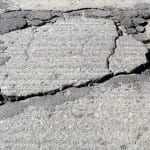
Use These Crucial Tips for a Great Gravel Driveway and Perfect Pavers
Gravel and pavers are both flexible and affordable options for driveways and walkways. With good maintenance, a driveway made from gravel or pavers can be an attractive, functional and long-lasting addition to your home.
But things like weather cycles, moss and weeds can damage both the appearance and the function of your driveway, leaving you with a green mess or a giant mudhole instead of the driveway you envisioned.
You may even end up shelling out money to replace your driveway years before you should have to. Don’t waste your investment in your driveway!
Use these tips to keep your gravel driveway in top condition for years to come.
Gravel Driveways
Gravel driveways are relatively easy to install, and cost much less than asphalt or concrete. They also are able to easily drain water around the gravel without developing the cracks and other problems that can affect concrete and asphalt as a result of water.
As long as you build your gravel driveway the right way, with the proper gravel layers, good grading and a good retaining border, it should serve you well for many years.
But gravel driveways do develop some problems from wear and tear, such as potholes, gravel loss and ruts.
Here’s how to deal with these issues and keep your driveway in tip-top shape:
1. To Fix Potholes: Potholes not only look bad–they can also worsen drainage problems in your driveway and lead to car damage or sprained ankles. Potholes will continue to get worse with every rain, so fixing them right away is key.
First, rake any gravel, large rocks or other debris out of the pothole. Check the sides of the pothole and, if the dirt along the sides is loose, cut the sides into vertical walls.
Fill the pothole with coarse gravel, with the top of the gravel stopping at 3 inches lower than the level of the driveway. Tamp the gravel down, and fill the hole the rest of the way with gravel that matches the size, shape and color of the rest of the driveway.
Mound the new gravel a little above the surface of the driveway, and then rake it to blend it in. Once you’ve finished repairing the pothole, drive the tires of your car over the area a few times. This makes it compact further.
Click here for detailed instructions from The Home Depot. If potholes keep re-appearing, you may need to fix your driveway’s drainage.
2. To Repair Ruts: The best way to deal with ruts is through prevention. Check your driveway twice a year for any signs of ruts or gravel loss.
You can repair minor ruts by replacing gravel and raking. For moderate ruts, you may need to remove the gravel from the driveway and re-stabilize the driveway.
Major ruts may require a complete driveway overhaul.
If extreme weather conditions or other issues lead to frequent stability problems for your driveway, you might want to consider a stabilized gravel system. It costs more than plain gravel, but still much less than asphalt or concrete.
Driveway Pavers
Concrete or brick pavers can add a distinctive, old-fashioned touch to your driveway. They also make it easy to fashion a driveway of any size or shape.
They also cost much less than poured concrete, which is a real bonus these days. A well-built, well-drained paver driveway will last a long time.
However, even the best driveways need some maintenance to keep them at their best. Here is how to keep your paver driveway going strong:
1. Seal Regularly. Regular sealing will protect your pavers from harsh weather, keep the surface looking like new, and help prevent cracking and breaking.
Different materials require different care. Check with the pavers’ seller to find out which type of sealer to use, and how often you need to seal.
2. Keep Pavers Clean and Weed-Free. Sweep your driveway regularly to keep it looking good and prevent surface damage from debris, and check the surfaces of the pavers for any moss, lichen, algae, mold or mildew growth.
These growths can cause a lot of problems for pavers besides just looking ugly: Green algae, mold and mildew can become very slippery and pose a danger for your family and guests, lichen can damage the surface of some pavers, and moss can worsen cracking. Moss can also grow between pavers, where it can be very difficult to get rid of.
If you see any of these nasty growths, zap them with Wet & Forget Outdoor.
Weeds can also grow between pavers, giving your driveway a “jungle” look. This can cause your pavers to shift out of place or break.
Jeff Patterson at Home Repair Tutor uses polymeric sand to keep weeds away between his pavers and patio stones; click here for his detailed instructions.
Regular treatment with weed killer is another option. Jeff uses a white vinegar solution as a natural weed killer.
3. Maintain the Border. Many paver driveways have a sand border around them. If your driveway has a sand border, check it twice a year, preferably in the spring and fall. Make sure to replace any lost sand.
This will help keep your driveway stable. No matter what type of border your driveway has, inspecting it for weather damage every spring and fall and keeping it in good repair are crucial to your driveway’s stability.
4. Replace Broken Pavers. Broken or sunken pavers will change the level of your driveway and lead to water pooling and further breakage.
To prevent more problems, repair or replace broken pavers ASAP, and re-set any sunken pavers.









